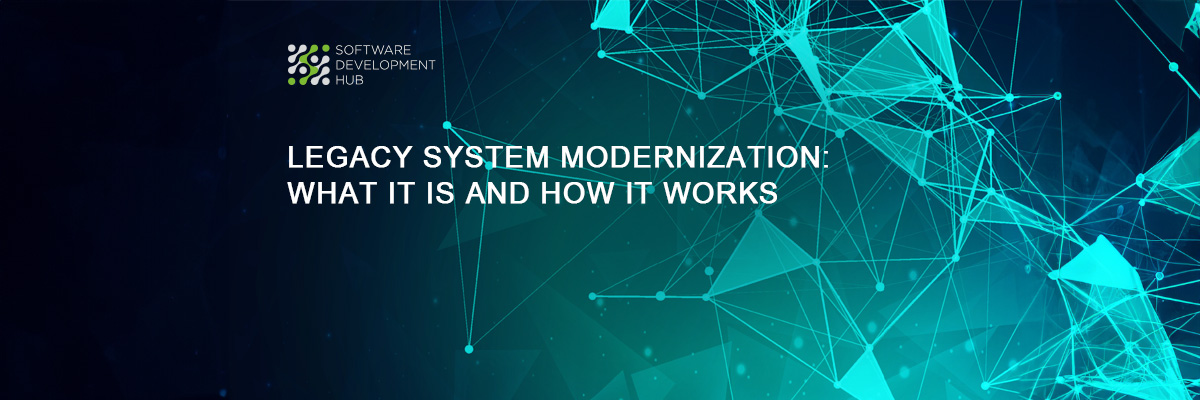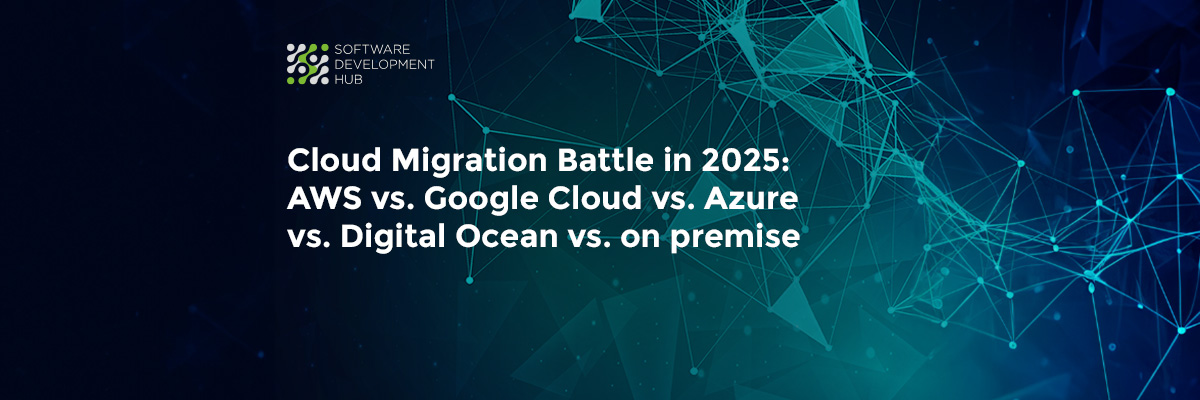5 Best Practices for Data Architecture Modernization in 2024
Every year, the number of new companies in each industry is increasing at an incredible speed. In addition, the market demands are growing because people want to receive quality services with minimal effort and time spent. This leads to high competition and, accordingly, business owners have to look for ways to modernize their business in order to remain in demand.
It is well known that almost any company works on the following model — they provide services to clients by operating their data. The issue of storing this data is extremely relevant at the moment, because with the development of technologies, companies are forced to improve in this aspect. That's where the question of how to modernize data architecture in 2024 arises.
Looking at modern data architecture
Suppose you've done any research on the topic of data architecture. In that case, you know that in the past, it was typical to store information in monolithic structures that lacked flexibility and scalability.
Now, the increased use of Artificial Intelligence and Machine Learning has led to a shift to decentralized data storage models. It is true that from niche to niche, the type of data architecture can vary, so you should take that into account too. However, proper data architecture modernization will bring you benefits such as:
- flexibility
- scalability
- data security
- quality of data
- good integration with business processes
- storage of data in compliance with laws and regulations
- quick adaptation to market changes.
Data architecture modernization in 2024
Eliminate data silos
It's obviously the easiest time to build a modern data architecture when you're just working on launching your business, and you don't have existing data sets scattered across different applications and storage systems. But, modern architecture is often needed by companies that have been in the market for a long time. Therefore, the very first step to the changes would be to get rid of the data silos.
What is this in simple terms? Data silos mean that your company does not have unified storage, and each department stores information in separate apps or software that cannot be accessed easily. Accordingly, this hampers the speed and efficiency of decision-making and negatively affects the flow of all business processes.
Your goal should be to get rid of such data silos by connecting and consolidating all data sources. It is important that you can access all information without restrictions.
Pick your approach to data architecture modernization
As we mentioned above, every enterprise has its own unique structure, needs, and specificities. Because of this, there are no universal tools and techniques that will fit absolutely everyone in the process of modernizing data architecture.
In order for your company to benefit and improve after the reform, you first need to thoroughly analyze all technical aspects of your business and understand how they affect the quality of work processes. Also, determine how much data you store, whether you need to connect old and new systems, and so on. Based on the results, you will be able to clearly understand which tools can be ideal for you. For example, cloud options will work for those who have large databases that should be expanded on a regular basis. At the same time, if you have a lot of different systems that do not work together, you may need a tool that can work with all of them.
Ensure data quality and reliability
Since the successful functioning of virtually any business depends on the quality and relevance of the information with which it works, it is certainly worth paying attention to this issue.
Before you start any manipulations with your databases it is worth making a backup, which will help you not to lose everything if something goes wrong. The next step is to think in detail and plan how you will integrate your systems and storage into the new architecture. You should check and analyze all the data so that it is up-to-date and verified. Your business will be successful only in case of operation with reliable information.
Keep all your data up-to-date at all times. To do so, conduct regular checks, prepare reports, analyze information, and make sure that all systems and equipment are in good working order.
Read also: 10 Best Data Migration Tools in 2024
Provide data governance and cybersecurity
Paying attention to data management and its security is essential, especially in the realities of modern business, where there are regulatory requirements related to consumer data protection. A suitable data management model involves a set of clear rules and procedures that make it easy for company representatives to work with it and keep it protected from any cyber threats.
Consider incorporating of solutions such as:
- Data encryption
It will help protect all the information because only those who have authorized access to it will be able to see the decrypted data. - Multi-level access to information
To eliminate possible data leaks from inside the company, introduce multi-level access to data storage. That is, each employee will have access only to the part of information that is required only for his or her work. - Regular training of employees
Conducting a business these days involves constantly introducing newer technologies into its functioning. Therefore, it's important that your employees understand how to work with them to effectively manage all data and keep it safe. For example, introduce a semi-annual lecture course and be sure your staff is educated.
Read also: Best Practices of Security and Protection of Mobile Applications
Think in advance about future of your data architecture
In today's world, everything is changing so quickly that it is essential for a company to be able to adapt to the new environment without downtime. That is why every business decision should be made with thorough thought and planning. The same applies to the data architecture. It should allow your business to freely grow and remain competitive. For this purpose, it is worth paying attention to the following points:
- Business scaling
Expanding the company means that you have to cope with larger amounts of data during processes. In order to store all this information, think in advance about all the ways of scaling that will allow you to do it quickly, qualitatively and smoothly. - Fast adaptation to market changes
Your systems have to be easy to change. This will allow you to adjust workflows according to the updated business models, avoiding any losses. - Flexibility
The development of technologies does not stand still. With each passing year, solutions that can automate more and more complex decisions are created and this can greatly facilitate the processes of managing huge organizations. That's why it's crucial to ensure that your existing architecture allows you to incorporate new technologies into your workflows seamlessly.
Looking for a software development team?
At the moment, IT outsourcing services are booming due to the fact that a lot of people realize how advantageous it is to have a partner who can handle all the stages of development.
Software Development Hub is a company that has been providing custom software development services for over 19 years. We definitely know how to deliver a robust solution to make you satisfied. Also, our experts can analyze your case in-depth to find the best option that will be flexible enough to adapt to future workloads and market changes. Want to know more about us? Browse our portfolio of finished projects and book a consultation!
Categories
About the authors
Share
Need a project estimate?
Drop us a line, and we provide you with a qualified consultation.









